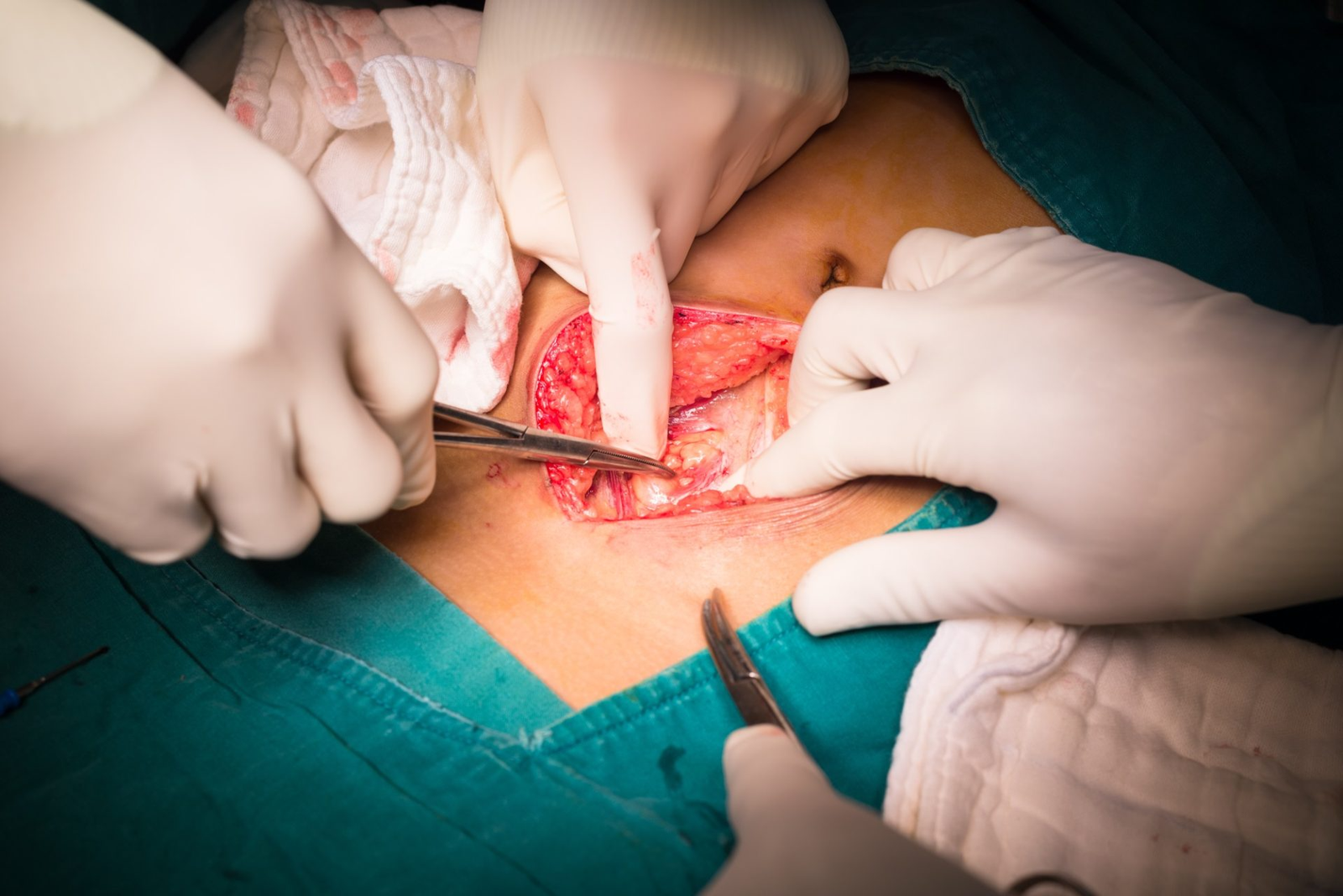Appendicitis is a common inflammation of the appendix, a small, finger-shaped pouch that protrudes from your large intestine. It can cause a different unpleasant symptoms, and while the exact cause is sometimes unknown, a blockage within the appendix often triggers the condition. Luckily, with timely diagnosis and treatment, appendicitis is a treatable condition. This blog post will explore the symptoms of appendicitis, delve into the potential causes, explain how it’s diagnosed, and discuss the treatment options available.
What is Appendicitis?
Though it’s just a small, finger-like extension of your large intestine, the appendix can cause big trouble if it becomes inflamed. This condition, called appendicitis, brings sharp pain to your lower right belly. The culprit behind the inflammation can be a blockage or an infection within the appendix itself. If left untreated, this inflamed pouch can rupture, spilling bacteria throughout your abdomen and leading to a serious illness. To prevent this dangerous complication, doctors recommend surgery (appendectomy) to remove the appendix. The good news is that you won’t miss this little guy, as it’s not essential for your body’s function.
What is acute appendicitis?
Acute appendicitis is a sudden inflammation of the appendix, a small finger-shaped organ attached to your large intestine. This inflammation causes severe pain, typically in the lower right abdomen. While the exact cause of appendicitis can be elusive, it often stems from a blockage within the appendix. timely diagnosis is crucial, as a burst appendix can spread infection throughout the abdomen. Acute appendicitis sonography, a type of ultrasound imaging, plays a vital role in diagnosing this condition. By visualizing the appendix and assessing its size and inflammation, sonography helps doctors determine the need for treatment, which usually involves surgical removal of the appendix (appendectomy).
What is chronic appendicitis?
Chronic appendicitis and menstruation can sometimes create a diagnostic challenge. Both can cause lower abdominal pain, making it difficult to pinpoint the exact source. While menstrual cramps are typically crampy and predictable, chronic appendicitis can present with dull or achy pain that can worsen over time. If you experience abdominal pain that persists or intensifies, especially during your period, it’s important to see a doctor to rule out chronic appendicitis and ensure proper diagnosis and treatment.
4 stages of appendicitis
Appendicitis isn’t a one-size-fits-all condition. It progresses through 4 stages, each with varying severity. The initial stage involves early inflammation, causing mild discomfort. As inflammation worsens, the appendix fills with pus (suppurative stage). If left untreated, this inflammation can cut off blood flow, leading to a gangrenous appendix. The most serious stage is perforation, where the appendix bursts, spilling infection into the abdomen. Early diagnosis and treatment are crucial to preventing complications like perforation.
How common is appendicitis?
Acute appendicitis is a frequent abdominal issue, particularly striking those between 10 and 30 years old. While it can affect younger children, teenagers are most commonly diagnosed. In the United States, roughly 5% of the population will experience acute appendicitis at some point in their lives, making it the primary culprit behind emergency abdominal surgeries for such pain. However, it’s important to note that chronic appendicitis, a less frequent condition, affects only about 1% of the population.
Symptoms and Causes
What are the symptoms of appendicitis?
While abdominal pain, nausea, and loss of appetite are the hallmark symptoms of appendicitis, they don’t always present in a textbook manner. In fact, only around half of appendicitis cases follow the classic symptom progression. This can be especially challenging for diagnosing children, elderly individuals, and pregnant women who may exhibit atypical symptoms.
What are the early signs of appendicitis?
The classic presentation of appendicitis follows a distinctive pattern. It starts with a dull ache or discomfort around the belly button that can come and go for a few hours. This pain then intensifies, often accompanied by nausea and vomiting. As the inflammation worsens, the nausea subsides, and the pain sharply concentrates in the lower right abdomen, where the appendix is located. This localized pain typically becomes progressively more severe.
What are other possible symptoms of appendicitis?
Appendicitis can sometimes present with additional symptoms as it progresses. Fever, affecting up to 40% of cases, signals your immune system ramping up to fight infection. It could also indicate worsening inflammation or the potential spread of disease. You might experience a general feeling of being unwell lacking energy or motivation, known as malaise. This can make you want to stay in bed, similar to when you have a cold or flu. In advanced stages, your abdomen may appear distended or feel bloated. Urinary symptoms like increased urination or urgency can arise if appendicitis irritates nerves near your bladder. Your bowels might be affected too, with some experiencing constipation and feeling unable to pass gas, mistakenly believing a bowel movement would provide relief. Conversely, others might have diarrhea due to inflammation irritating the nearby colon.
How can I check for appendicitis at home?
While suspecting appendicitis warrants immediate medical attention, there are some signs healthcare providers look for during a physical exam. Pain location is a key clue, especially the classic progression from the navel to the lower right abdomen. However, some variations exist. Here are some specific tests doctors might perform:
- McBurney’s sign: Tenderness at McBurney’s point, the most common location of the appendix, is often the first thing checked. It’s located about two inches down a line drawn from your hip bone (ASIS) to your navel.
- Blumberg’s sign: This involves applying pressure to the sore area and then releasing it. If the pain worsens upon release (rebound tenderness), it can indicate appendicitis.
- Dunphy’s sign: If coughing intensifies the pain, it might be a sign of appendicitis.
- Rovsing’s sign: Pressing on your lower left abdomen and feeling pain in your lower right quadrant can be suggestive of appendicitis.
- Psoas sign: If your appendix is located behind your colon, inflammation can irritate your psoas muscle. Flexing your right hip to relieve pain might be a sign. Doctors may also check for pain when extending or rotating your right hip outwards (psoas sign) or inwards (obturator sign).
What other conditions might be confused with appendicitis?
Appendicitis isn’t always a straightforward diagnosis, especially for women and those assigned female at birth (AFAB). Since the lower abdomen shares close quarters with the pelvic cavity, conditions affecting these organs can mimic appendicitis with an uncanny resemblance. This intricate network includes the urinary system, the female reproductive system, and even other lower abdominal organs.
Unraveling the true culprit behind the pain becomes a detective game for healthcare providers. Common imposters that can masquerade as appendicitis include pelvic inflammatory disease, endometriosis, ovarian cysts, kidney stones, and even urinary tract infections. But the plot thickens further—pancreatitis, inflammatory bowel disease, diverticulitis, gastroenteritis, and intestinal obstruction can also be on the suspect list.
What causes appendicitis?
The appendix’s location and size make it a prime target for trouble. Nestled near your large intestine, teeming with bacteria, a blockage is easy to come by. Sometimes, too much bad company gets trapped inside, leading to an overgrowth and infection. In other cases, an infection elsewhere might travel and set up shop in the appendix. This blockage, often caused by hardened poop nuggets known as appendix stones, can also trap dead cells and bacteria already present. The appendix, in its valiant effort to fight back, can swell, further narrowing or closing its opening, creating a bacterial breeding ground.
While appendix stones are a common culprit, other threats can lurk. Your body’s lymphatic system, a soldier in the fight against infection, can sometimes overreact. This can cause the lymphoid tissue within the appendix to swell, even if the initial infection is elsewhere. This swelling can obstruct the appendix, leading to internal infection. Additionally, inflammation in your colon from conditions like inflammatory bowel disease can spread the fire to your appendix or simply irritate it. Less frequent blockages can be caused by unwelcome guests like tumors or parasites, and even cystic fibrosis can increase your risk.
What causes chronic appendicitis?
Chronic appendicitis is a bit of a mystery. Unlike the sudden pain of acute appendicitis, chronic cases involve ongoing mild inflammation. This could be due to a long-term condition or a blockage that keeps coming and going. Over time, this irritation can cause the appendix to thicken with extra tissue or even scar tissue.
- Is appendicitis genetic?
While a family history of appendicitis seems to nudge up your risk, the exact reason remains unclear. Appendicitis itself isn’t directly passed down through generations. However, genetics might play a role in some of the underlying factors that contribute to appendicitis, making you more susceptible if someone in your close family has battled it.
- Can stress cause appendicitis?
Severe stress typically doesn’t trigger appendicitis directly. However, critical illness can lead to bowel ischemia, a condition where reduced blood flow harms the intestines. In rare instances, this ischemic colitis might also affect the appendix, mimicking appendicitis symptoms.
- What food can cause appendicitis?
While there have been occasional whispers of an undigested seed or nut causing appendicitis by getting lodged in the appendix’s opening, it’s an uncommon occurrence. The bigger picture is actually quite the opposite – a diet full of fiber can help lower your risk of appendicitis. So, pile on those fruits, veggies, and whole grains!
What are the possible complications of appendicitis?
Appendicitis is a ticking time bomb, and prompt medical attention is important to avoid serious complications. These complications can unfold in stages, though the order isn’t always predictable. The first stage involves ischemia and necrosis. Severe swelling chokes off the appendix’s blood supply (ischemia), worsening inflammation and leading to tissue death (necrosis). If necrosis sets in, the infection can spread. This can happen slowly through gangrene or rapidly if the appendix bursts (perforation). Initially, the infection might be confined to an abscess, a pus-filled pocket near the appendix. Alternatively, a phlegm, a mass containing the infection, can form around the appendix. While these masses can contain the infection, they pose a risk of bursting. The most dire complication is peritonitis, where infection spills into the abdominal cavity. From there, it can reach other organs and even the bloodstream (septicemia). Bloodstream infection can progress to sepsis and septic shock, which can be fatal.
Diagnosis and Tests
1. How is appendicitis diagnosed?
Diagnosing appendicitis often involves a two-pronged approach. First, a healthcare provider will launch a detailed investigation into your pain and other symptoms. This will involve a physical exam where they’ll gently check for signs like involuntary muscle stiffening (guarding) and tenderness in your abdomen. If your presentation aligns with the classic symptoms, a diagnosis might be reached quickly. However, for atypical cases, additional tests like an ultrasound become crucial. This painless imaging technique can help visualize your appendix and reveal abnormalities suggestive of appendicitis.
2. What tests can diagnose appendicitis?
Unraveling the culprit behind abdominal pain requires a detective’s touch. To diagnose appendicitis, healthcare providers typically employ a combination of tests. Blood tests are the first line of defense, searching for signs of inflammation like elevated white blood cell counts or C-reactive protein levels, which can indicate infection. However, blood tests alone can’t definitively diagnose appendicitis. This is where imaging tests step in. An abdominal ultrasound, a painless procedure using sound waves to create images of your organs, is often the next step. By visualizing your appendix, the ultrasound can reveal abnormalities suggestive of appendicitis, such as swelling or inflammation. If the ultrasound findings are inconclusive, a CT scan, which uses X-rays to create detailed cross-sectional images, might be necessary for a clearer picture. Ultimately, these tests work together to help pinpoint appendicitis and ensure you receive the proper treatment.
Management and Treatment
1. Can appendicitis go away on its own?
While uncommon, there’s a chance appendicitis can resolve on its own. This might occur if the cause, like a stuck piece of stool, dislodges and moves through your intestines. Alternatively, an infection causing inflammation (lymphoid hyperplasia) could unexpectedly clear up. However, it’s crucial not to gamble on spontaneous resolution, even if the pain subsides. Appendicitis is a ticking time bomb, and seeking medical attention is essential to avoid serious complications.
2. What is the treatment for appendicitis?
Appendicitis is a medical emergency requiring a trip to the ER. The go-to treatment involves a combination of medication and surgery, with some rare cases potentially treatable with medication alone.
- Medication
Antibiotics are a mainstay of appendicitis treatment, fighting any existing infection and preventing further complications. They’re typically given before surgery, and in very rare, mild cases, antibiotics alone might be an option under close monitoring by a healthcare provider. Pain medication is another key element, often delivered intravenously. Finally, if surgery is needed, general anesthesia will ensure you’re unconscious and comfortable throughout the procedure.

- Surgery
Appendicitis is a race against time. With rupture a possibility within 36 hours of initial symptoms, surgeons typically aim to remove your appendix (appendectomy) within 24 hours of diagnosis. This appendectomy is a common surgery, often performed laparoscopically using minimally invasive techniques. The surgeon will address any complications during surgery, potentially requiring a traditional open abdominal approach. After surgery, your abdomen will be cleansed with a sterile solution. The good news? There aren’t any known side effects to having your appendix removed. While its exact function remains unclear, it likely plays a minor role, possibly in childhood antibody production.

What is the recovery time after appendectomy?
Recovery after an appendectomy depends on the type of surgery. For a straightforward laparoscopic procedure, you might even be able to go home the same day! However, complications or open surgery may require a longer hospital stay. Pain management is crucial during the initial recovery at home, and most people make a full recovery within six weeks.


